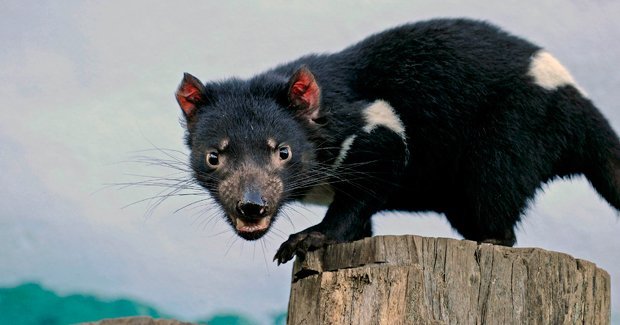Tassie devil vaccine may be on the horizon

THERE IS NEW HOPE for a vaccine that may be able to prevent the facial cancer that is driving the Tasmanian devil to extinction.
Devil facial tumour disease (DFTD) – a contagious and highly aggressive cancer – has decimated devil populations across Tasmania. New research has revealed that the cancerous cells that result from the disease can disguise themselves so they are unrecognisable to the devil’s immune system.
The finding, published this week in the journal PLOS ONE, suggests this disguise might be reversible.
Possible cure for devil facial tumour disease
“Rather than a mutation occurring within a gene, it is a modification on top of the DNA,” says Professor Kathy Belov, part of the research team at the Sydney University Veterinary Department. “What that means is that it’s a reversible thing.”
The team are now attempting to reverse the tumour cells, in order to make them recognisable to the devil’s immune system. These modified cells could potentially be used to form a vaccine, stimulating the devil’s natural body defences, and eventually causing it to reject the cancer cells altogether.
A huge benefit of this program is that it would allow vaccinated devils to be released back into infected populations, which would help to maintain ecosystems and devil populations.
Tassie devil vaccine still 10 years away
There are still many hurdles to jump before a vaccine can be developed. For example, the devil’s endangered status means that test subjects for medical trials will be hard to come by.
“At the moment we just have the one devil, ideally we’d like more,” says Associate Professor Greg Woods, who is working on trials at the Menzies Research Institute in Tasmania. “We need to run the tests on three to begin with. If that works – great. If it doesn’t, we’ll need three more, and if that doesn’t work, we’ll need three more.”
“All things going well, it’s still going to take 10 years to develop this vaccine,” Kathy says. “It’s not something that’s going to be available next year.”
“What’s important is that it gives us an area to target. If we can switch this gene on and maintain it, then we’ll know within a couple of years whether this strategy is going to work.”
RELATED STORIES

